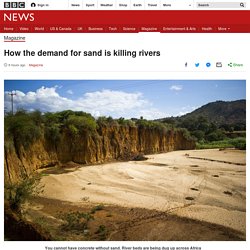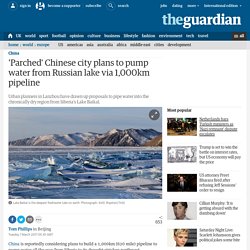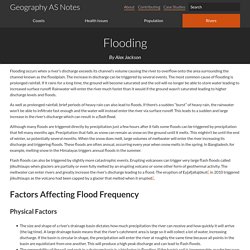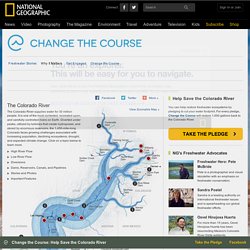

Untitled. Rivers in which fish populations have escaped serious damage from human activities make up just 14% of the world’s river basin area, according to the most comprehensive study to date.

Scientists found that the biodiversity of more than half of rivers had been profoundly affected, with big fish such as sturgeon replaced by invasive species such as catfish and Asian carp. Pollution, dams, overfishing, farm irrigation and rising temperatures due to the climate crisis are also to blame. The worst-hit regions are western Europe and North America, where large and affluent populations mean humans’ impact on rivers is highest, such as with the Thames in the UK and the Mississippi in the US. Rivers and lakes are vital ecosystems. They cover less than 1% of the planet’s surface, but their 17,000 fish species represent a quarter of all vertebrates, as well as providing food for many millions of people.
A major change is the number of alien species introduced to rivers. Consequences of water control projects - Revision 5 - Higher Geography - BBC Bitesize. A Brief History of Africa’s Largest Water Project. A Brief History of Africa’s Largest Water Project Updated January 2005 Contents The Watershed The Senqu (Orange) River originates in Lesotho, and forms the boundary between South Africa and Namibia before it enters the Atlantic Ocean.

SEPA Water Levels. National River Flow Archive. Damming the Nile: Explore with 360 video. A new dam on the Nile could trigger a war over water - unless Ethiopia can agree a deal with Egypt and Sudan.

<div style="position: relative"><img src=" alt="a 360-degree version of the Damming the Nile VR series from BBC News" style="display: block; width: 100%; opacity: 1;"><div style="background-color: rgba(0,0,0,0.5); bottom: 0; color: #fff; display: block; font-weight: bold; left: 0; padding: 8px; position: absolute; right: 0; z-index: 10 !
Important;"> Media playback is unsupported on your device </div></div> Join the BBC's Africa correspondent Alastair Leithead and his team, travelling from the Blue Nile's source to the sea - through Ethiopia and Sudan into Egypt. Flying high above the river and its waterfalls, you will inspect the dam up close and take a sunrise balloon ride over Luxor as the story unfolds.
This 360° video is a version of the first VR documentary series from BBC News. To view the full films, go to bbc.co.uk/virtualreality for more information. Colorado River - America's Most Endangered River 2013. How the demand for sand is killing rivers. You cannot have concrete without sand.

River beds are being dug up across Africa to fuel a building boom, with little thought for what this means for the health of the river, and those who depend on it, as Harriet Constable found in Kenya. Sand. The word conjures happy holiday memories: building castles from it; watching nervous crabs scuttle across it; digging giant holes in it, and then hiding in them and leaping out at opportune moments to terrify unknowing relatives. Sand is the make up of glittering beaches, hundreds of thousands of years of weathering to create millions and millions of tiny, sparkling, and yet seemingly insignificant particles. Sand is infinite, surely. It's obvious when you think about it. So much so that a UN report estimated global sand use in 2012 alone could have created a concrete wall 27m high by 27m wide around the equator.
Drought-dry Lake Mead recedes to unveil long-submerged Wild West town. Photo: JKotto, Wikimedia Commons A building foundation in St.

Thomas revealed by receding water levels at Lake Mead. 'Parched' Chinese city plans to pump water from Russian lake via 1,000km pipeline. China is reportedly considering plans to build a 1,000km (620 mile) pipeline to pump water all the way from Siberia to its drought-stricken northwest.

According to reports in the Chinese media, urban planners in Lanzhou, the capital of Gansu province, have drawn up proposals to pipe water into the chronically parched region from Russia’s Lake Baikal, the deepest freshwater lake on earth. Li Luoli, an academic who is one of the plan’s cheerleaders, claimed the mega-project - roughly the equivalent of pumping water from Lake Como to London - was both theoretically feasible and “certainly beneficial” to China. “Once the technical issues are resolved, diplomats should sit down and talk to each other about how each party would benefit from such international cooperation,” said Li, the vice president of the China Society of Economic Reform, a state-run think tank. The Economist. Worldmapping beyond mere description. National Geographic Live! - Chasing Rivers, Part 1: The Colorado.
Remains of a River: Full-Length Film. Flooding. <div class="crappy-browser-warning-box"><p>You seem to have disabled JavaScript.

You should really enable it for this site but <i>most</i> things should work without it. </p></div> Flooding occurs when a river’s discharge exceeds its channel’s volume causing the river to overflow onto the area surrounding the channel known as the floodplain. The increase in discharge can be triggered by several events. The most common cause of flooding is prolonged rainfall. As well as prolonged rainfall, brief periods of heavy rain can also lead to floods.
Although many floods are triggered directly by precipitation just a few hours after it falls some floods can be triggered by precipitation that fell many months ago. Flash floods can also be triggered by slightly more catastrophic events. Factors Affecting Flood Frequency Physical Factors. National Geographic. Balancing Limited Supply With Increasing Demand The Colorado River Basin is a critical component of North American water supply, providing H2O to 30 million people and thousands of acres of farmland.

When Colorado River withdrawals were first allocated among the river basin’s seven states, in 1922, the river held 17.5 million acre-feet (5.7 trillion gallons) of water. However, new science has shown that 1922 was part of an especially wet period. The river now averages about 14.7 million acre-feet per year and is allocated among seven states and Mexico. Water managers are trying to address growing challenges associated with over-allocation, rapidly increasing urban populations, development of unused water rights, and expected climate change.